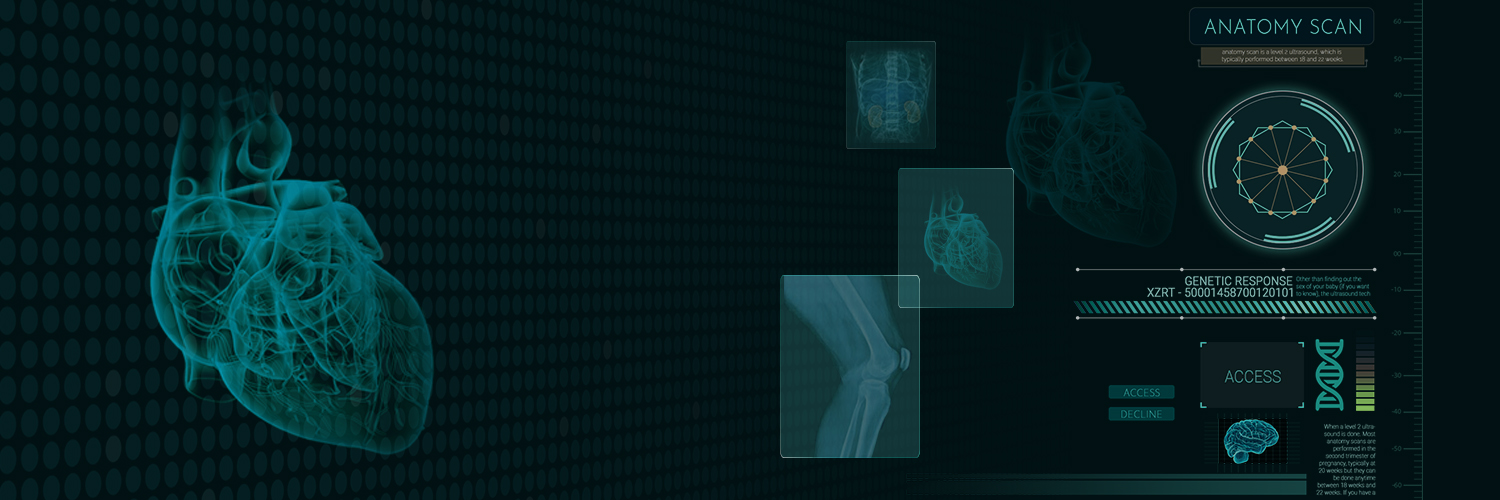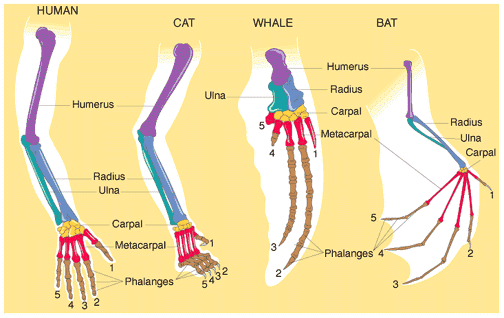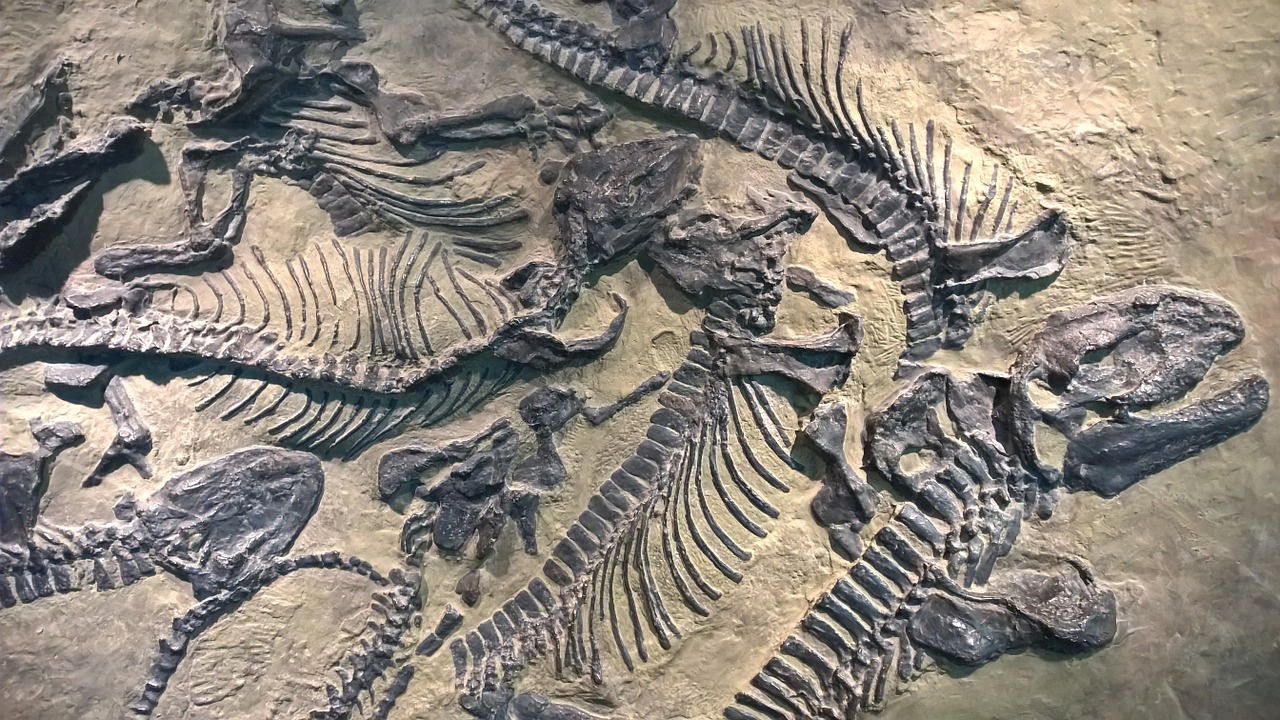
A group of organisms have certain characteristics in common. For instance, mammals and reptiles have four limbs and the basic structure of their organs is similar even though they use it for different functions. Such organs are called homologous organs. But they share a common ancestor. Some organisms appear to be similar but basic designs are different like wings of bats and birds. They use wings for the same function but they have different basic structures. Such organs are called analogous organs. In this way, the homologous and analogous characteristics help to trace an evolutionary relationship between different species.
Some of the important sources which provide evidences for evolution are :
(i) Homologous Organs Homologousorgans have the same basic structure (or same basic design) but different function. There are many organs in cdifferent groups of animals (or plants) which all seem to be built from the same basic design but are used for many different purposes. These are called homologous organs. The forelimbs of a man, a lizard (reptile), a frog (amphibian) a bird and a bat (mammal) seem to be built from the same basic design of bones but they perform different functions.

(ii) Analogous organs
Those organs which have different basic structure (or different basic design) but have similar appearance and preform similar functions are called analogous organs.
For example: The wings of a bird and an insect perform the same function of flying. The wings of a bird have a support of skeleton, flesh and feathers but insects have a fold of membrane as wing associated with a few muscles. Thus, wings of a bird and an insect are very different in origin and structure. So, they are analogous organs.
(iii)Fossils
The remains (or impressions) of dead animals or plants that lived in the remote past are known as fossils. They are the preserved traces of living organisms. For ex. A fossil bird called Archaeopteryx looks like a bird but it has many other features which are found in reptiles. This is because Archaeopteryx has feathered wing like those of birds but teeth and tail like those of reptiles Archaeopteryx is, therefore, a connecting link between the reptiles and birds, and hence suggests that the birds have evolved from the reptiles.
Generally, when living organisms die, their body degrade and decompose eventually. However, some evidence is left by the environment. When a body is trapped under mud, as the mud hardens, the impression of the body will be left in the mud. Thus, fossils are formed. Ex, Fossils of dinosaurs.

The age of fossils can be estimated by two ways. The first method is more relativeinvolving the assumption that the fossils found at top layers are more recent ones while fossils at deeper layers are older. In the second method, the ratios of different isotopes of the same element in the fossil are estimated.
Study of fossils helps in finding out:
(a) Interrelationship of ancient life.
(b) Correlation of forms of life existing today and their line of evolution from ancient life.